Liu Yen-ming's success as a nature photographer is a case of the right man in the right place at the right time.
Ever since he was a boy, he has loved films about the animal kingdom and enjoyed photography, later earning a living by making documentaries about historic places and popular customs. He always thought that wild animals were found only in Africa and used to tell himself, "If I ever make enough money, I'll go there to photograph them."
When the environmental protection movement gathered steam on Taiwan seven or eight years ago, attention began to be given to the protection and study of native plants and animals, and many photographs of nature and wild animals started to appear in the media.
Kuantu, near Taipei, also attracted attention because of the myriads of migratory birds that stop there during the year. That was when Liu suddenly realized that he didn't have to go to Africa to achieve his heart's desire.
When he looked up the writer Liu K'o-hsiang, an experienced bird watcher, and told him he was thinking of going to Kuantu to shoot a documentary there, the writer told him, "It won't be very hard." And he did in fact become the R.O.C.'s pioneer photographer of nature films with his work there.
But trying to capture all the details of wild animals in their natural habitat is not something that can be described as "not very hard."
"Being stood up by a bird happens all the time." They're both forms of photography, but compared with his previous work Liu's first impression of his new subject matter was: "At least historic sites won't fly off just when you've set up the camera."
When photographing birds in the broad, open spaces of Kuantu, he often fretted about finding objects to hide behind, and when he found one he would creep up to it gradually so as not to scare the flock. It's uncomfortable standing, squatting or sitting on the muddy flats of the estuary, and you also have to put up with the stench of the foul water.
During the height of summer in July one time he spent two or three hours trying to film a Mongolian iron-beak bird (Charadrius Mongolus), lugging along his equipment, his body soaked with sweat. He had finally reached a suitable spot when a tourist suddenly ran over and scared it away . . . "The bird just moved a little way. I wanted to go after it but I couldn't keep up."
To win the trust of an animal and get a good shot, he can sit for a whole day at a place where it might appear, until he becomes a part of the surroundings, not daring to move abruptly, at the most stretching or taking a nap on his tripod when he's tired. To keep his pants from getting wet in the Kuantu swamp, he's learned to use his left foot as a pretty good cushion.
When waiting for an animal, you have to concentrate on what you're doing and empty your mind of everything else, lest you forget where you are and miss your shot when the animal appears. A young person wanted to work with him once, and when Liu told him he couldn't chat, he couldn't listen to a Walkman, he couldn't daydream, and he couldn't this and that, he said "couldn't" go.
Besides being adept in the outdoors, patient at waiting and skilled at photography, you also have to be knowledgeable about wild animals to take good pictures of them.
Liu Yen-ming "pestered" zoologists and animal experts for answers and pored through their books and research papers. To broaden his horizons, he trekked off to take pictures of birds and other animals in Ilan, Nantou and other mountainous areas, where he talked with hunters and bird watchers. He has come a long way indeed: from "not recognizing a single bird when I first went to Kuantu" to talking with assurance about their characteristic markings, habitats and patterns of behavior.
Even his year-round schedule is arranged according to animals' comings and goings. In the winter, when birds migrate down from the mountains, he "takes pictures of the different species one after another." The spring mating season is a particularly good time to stake out a location for good pictures. And his friends all know that during July and August he's most likely to be found in Taipei.
Fortunately, his wife got used to his being away from home a lot when he took pictures of folk activities. The only difference now is that the subjects have changed, and he runs off farther, to more sparsely populated places.
He looks on the hard work involved in nature photography as part of the job, just like a photographer taking promotional stills for a movie who runs into a temperamental star that refuses to cooperate and keeps having to cut and retake.
One friend of his quips that he has sacrificed his health as well as his savings for nature photography. During the first two years, especially, he would head off for Kuantu in the morning and be covered with mud and filth by noon. Without any means of transportation and for fear of missing a shot, he would just bring along a canteen of water and some dried provisions for lunch. His teeth were never very good to begin with, and after three years of this, besides ruining his digestion, he was left with only three healthy teeth and no time to have them cared for. He also grew a beard, from having no time to shave, and his friends call him "Granddad" or "Muttonchops."
Making documentaries is costly. Expenditures for film, developing and transportation used up nearly all his savings from photographing folk customs. In exchange, he had filmed nearly 100 species of birds, including four or five complete stories from hatching and moulting to mating, but because lacked funds, he still hadn't done the final work of cutting, dubbing and script writing.
Seeing that he had shot so much film but hadn't put it in finished form, his good friend Yang Hsien-hung, a freelance writer, was even more anxious than he was, fearing he would forget exactly what he had filmed as time went by, and pressed him to complete A Record of Migratory Birds of Kuantu. He was also afraid that his woefully neglected teeth would cause a serious health problem, and he asked a schoolmate of his to fix them for free.
And another old friend of his who runs a publishing house has also supported him constantly. Seeing him spend so much time trekking over hill and dale, he bought him a jeep for long trips early this year.
The habitats of wild animals, which are sensitive and wary of humans by instinct, are gradually being destroyed in the wake of economic development, and you often have to travel long distances nowadays if you want to catch a glimpse of them. As a result, beginning nature photographers usually start out with insects or birds, which are still rather numerous. Liu has also filmed birds the most, but what first made a name for him--and created a stir at an animal seminar in Japan earlier this year-- is The Taiwan Macaque. His involvement with monkeys came about through a friend he met when went off to the mountains to take pictures of birds--Chin Heng-piao, the former director of the Liukui branch of e Taiwan Province Forestry Experimentation Institute.
When he went to film birds at the Liukui branch four years ago, a bird watcher there had just discovered a nest of Formosan blue magpies. Chin Heng-piao believes that people will only care for animals and protect them if they understand more about them first and that audio-visual materials are better able to attract the public than the written word. So he encouraged Liu to make a documentary on the Formosan blue magpies and allocated funding for it from the institute's research budget.
Two years ago Chin introduced him to Lin Yao-sung, director of the zoology department at National Taiwan University, who was moved by his films. A doctoral student of his named Wu Hai-yin happened to be studying the macaques of Kenting, which are gradually dying out, and hoped he would work with her in making a videotape about them for educational purposes.
For the next two years, besides filming the Formosan blue magpies, he focused almost all his energy on the macaques.
When he started out in June 1988, Wu Hai-yin warned him not to harbor too much hope. Macaques are extremely wary and shy and difficult even to observe, not to mention photograph. Wu herself had to wait seven or eight days a month in the monkeys' habitat for an entire year before the monkeys would keep from running away when they saw her.
Liu's method was to wear green camouflage and squat in the woods to let the macaques get to know him. After six months they no longer shook the branches angrily when they saw him. Kenting, situated in the south of Taiwan, has a tropical climate, with ferocious mosquitoes, poisonous snakes and a fierce summer sun. Liu always went off to wait for them before dawn, before the monkeys had set out from home to romp and forage for food, returning only at dusk. He often waited in the forest for eight or nine hours and only sighted the monkeys at sunrise.
Although macaques are more lively than birds and more varied in behavior, they still aren't like actors that can be controlled or directed. When they do something cute, it usually flashes by and is gone before it can be captured on film. Liu waited two years before he shot a complete scene of a monkey yawning.
"In shooting nature films you have to put in time winning the animals' trust. You can't cut corners by unscrupulous means," he says.
A lot of his fellow photographers think he takes too much trouble. In fact, quite a few people have gone in for nature photography since the rise of environmental protection movement, but they often move birds' nests into the sunlight or even buy animals at pet stores to take better pictures of them.
Liu believes that animals exhibit their behavior most vividly only in their natural surroundings. If you don't take that as your objective, you might as well go to the zoo for your subject matter and avoid injuring harmless creatures.
With the rise in environmental consciousness, the market for nature photographs and audio-visual materials has gradually expanded. Some natural protection areas and national parks offer funding to people to make them, giving Liu many new competitors.
But his The Taiwan Macaque is still considered by the academic world to be the best nature film made in the country to date. It was nominated for a Golden Horse Award this year for best documentary. And his documentary on the Formosan blue magpie has finally enabled the joys of ecological research and studying the animal world, which are hard to describe in words, to be shared with the general public, according to Liu Hsiao-ju, an researcher in the Institute of Zoology at Academia Sinica.
Liu Yen-ming himself feels it isn't because his film techniques are especially good but only because he has put in more time and effort than most. Research on wild animals in Taiwan is still getting started and information is limited, so filming them in depth is particularly demanding. Agencies that provide subsidies want see a finished product as quickly as possible. But the animals couldn't care less about that. You can't do a good job without slow, patient work and rather ample funding. His funding problems for two years he spent filming the macaques were solved only with the help of the Council for Agriculture and the Government Information Office together with the zoology department of National Taiwan University. The university gave up its rights to the film in the hope that he can use the income as funding for his next nature documentary.
After the film came out, a corporation said it would pay him NT$10 million a year to take pictures for it to use as image advertising, but he refused because he suspected the company of polluting.
He has mixed feelings. On the one hand, he truly the needs money, but on the other, he doesn't want to depend on nature photography to make a living for fear he'll lower quality or even disturb the animals by trying to meet a deadline.
"Anyway, you can't just sit back and wait for someone to put up the money," he says. The animals are disappearing at an alarming rate. "If it goes on this way, you won't be able to film anything even if you're loaded with funding."
He takes his mouthful of false teeth as an example. Once nature has been destroyed, it can't be fully restored; a manmade substitute can never fully match the original. That's why he decided to turn his camera from historical sites to ecology, because there are more people advocating the preservation of buildings now than pleading for nature.
Chin Heng-piao has drawn up a long-range plan for him, listing the species that need to be filmed in order of priority based on the amount of information available and how urgent the need is to record them. Liu himself hopes the films can be infused with some humanistic contents.
But to do that, besides major financial support, a person with training in both nature and the humanities is indispensable. He hopes to be able to find that kind of person to work with.
Seeing the film he has accumulated inch by inch over seven years, his friend Yang Hsien-hung believes he has already opened a broader path for nature photography in Taiwan and that promoting the idea of environmental protection through films is more effective than a horde of environmentalists shouting themselves hoarse. His efforts along that path are certainly a great encouragement to those who cherish the world we live in.
[Picture Caption]
Liu Yen-ming and some of the Taiwan macaques that he spent two years filming.
Thanks to the jeep that a friend of his bought for him, Liu saves a lot of time traveling over hill and dale.
(Above right) Liu would rather wait patiently than risk disturbing the birds. He worked on the documentary on the Formosan blue magpie through four mating seasons from start to finish. (photo by Liu Yen-ming)
(Below right) Quite a number of Taiwan's wild animals have already been captured by his camera. Shown here is a tree-frog he filmed. (photo by Liu Yen-ming)
After waiting a long time without any sign of the animals, he rests his head against the tripod and takes a nap.
(Right) Liu also plans to film insects, which come in a huge number of species. This is a moth chrysalis. (photo by Liu Yen-ming)
Liu Yen-ming adds some finishing touches to his documentary on the Formosan blue magpie in the sound room.
(Right) Monkeys don't act according to script. You have to wait patiently if you want a good shot.
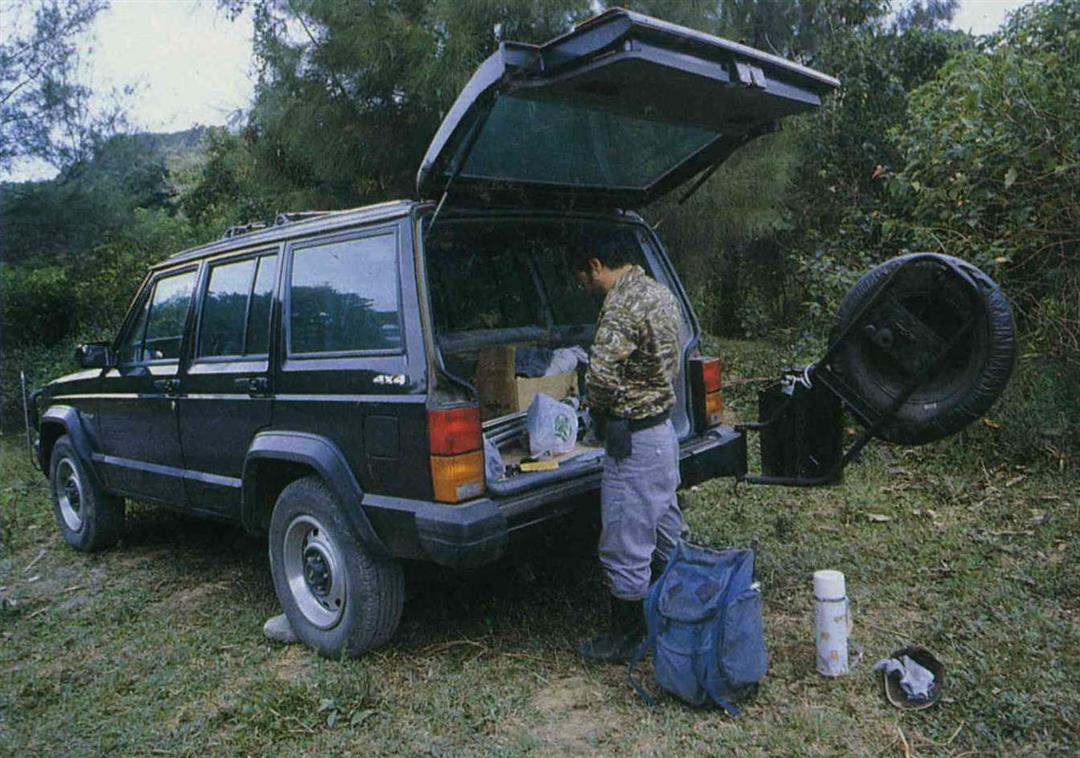
Thanks to the jeep that a friend of his bought for him, Liu saves a lot of time traveling over hill and dale.
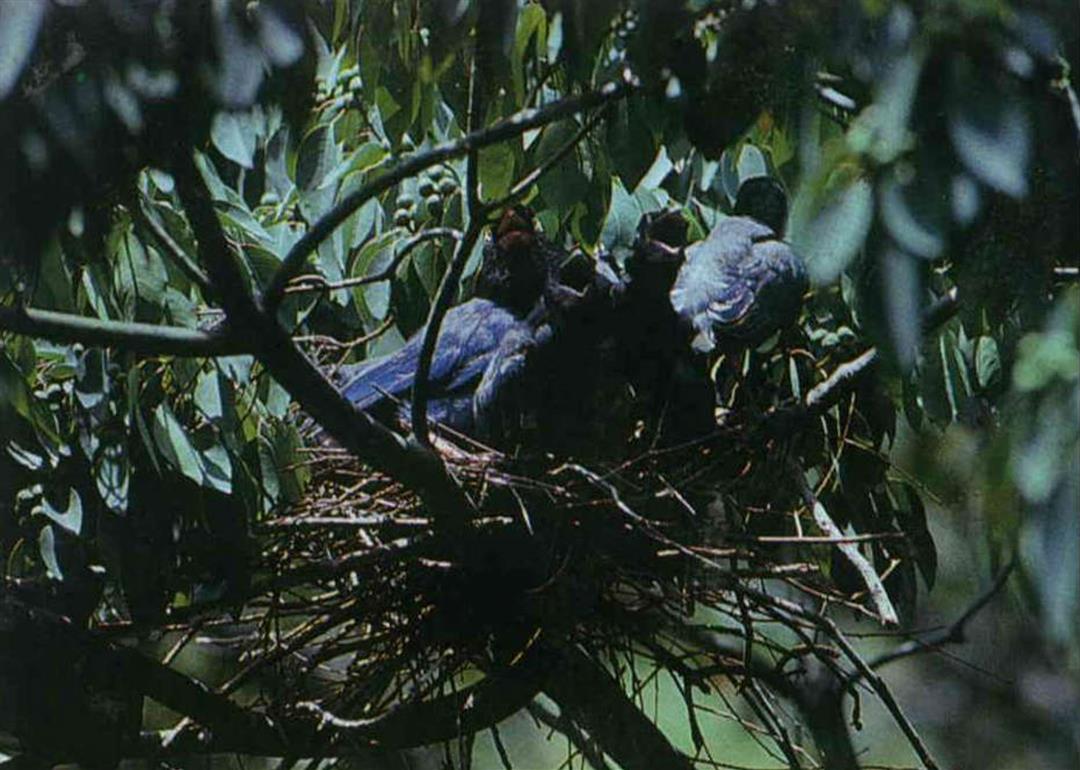
(Above right) Liu would rather wait patiently than risk disturbing the birds. He worked on the documentary on the Formosan blue magpie through four mating seasons from start to finish. (photo by Liu Yen-ming)
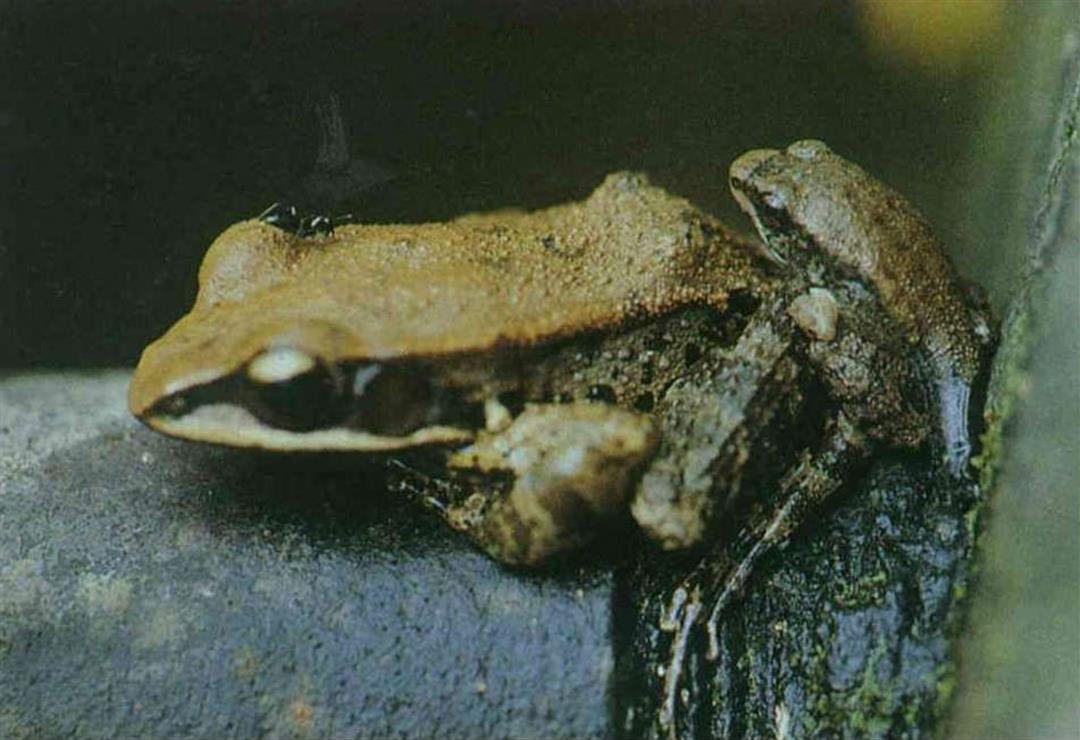
(Below right) Quite a number of Taiwan's wild animals have already been captured by his camera. Shown here is a tree-frog he filmed. (photo by Liu Yen-ming)
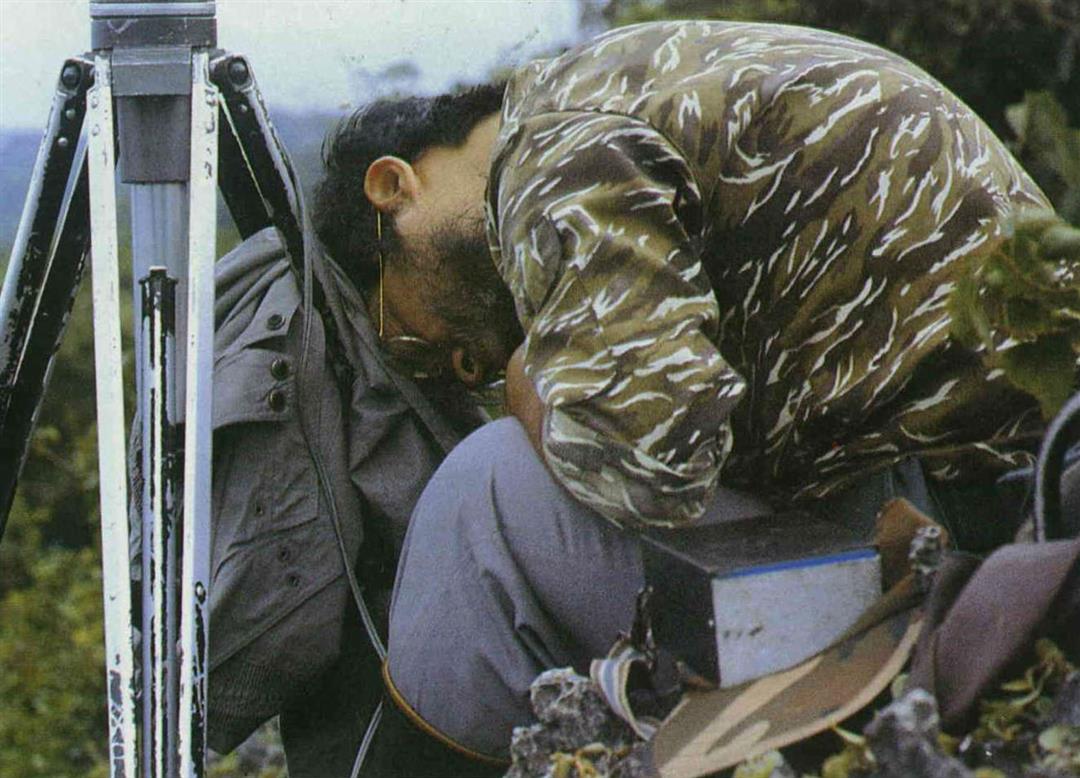
After waiting a long time without any sign of the animals, he rests his head against the tripod and takes a nap.
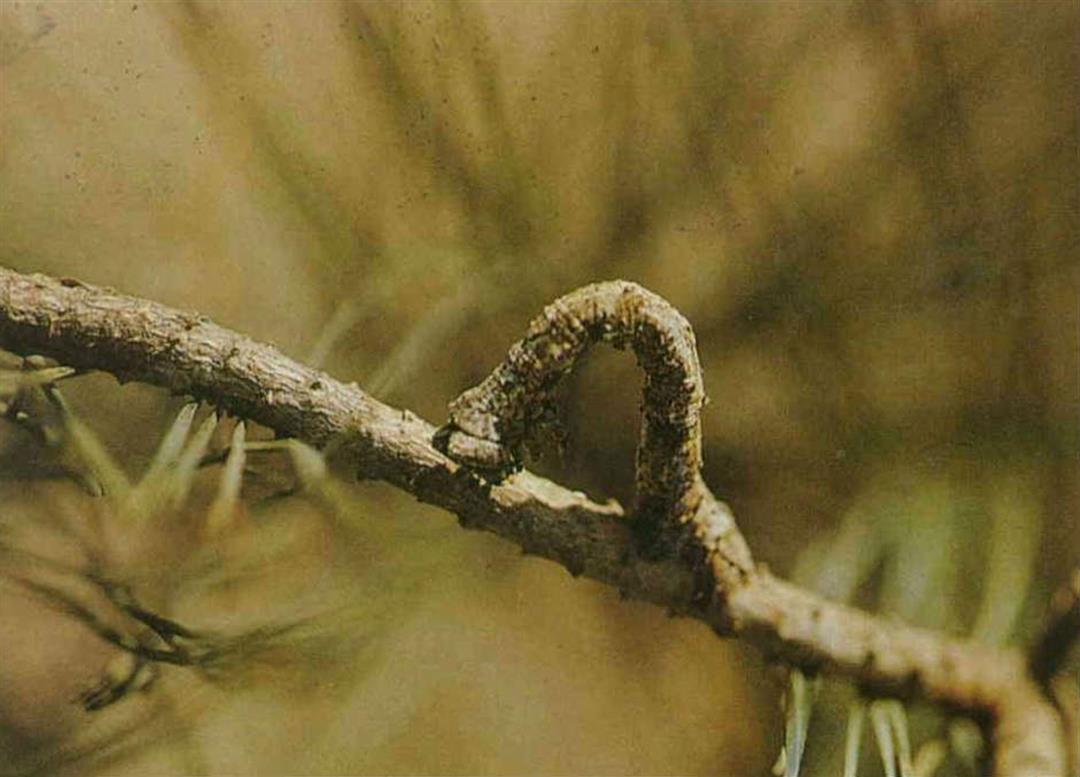
(Right) Liu also plans to film insects, which come in a huge number of species. This is a moth chrysalis. (photo by Liu Yen-ming)
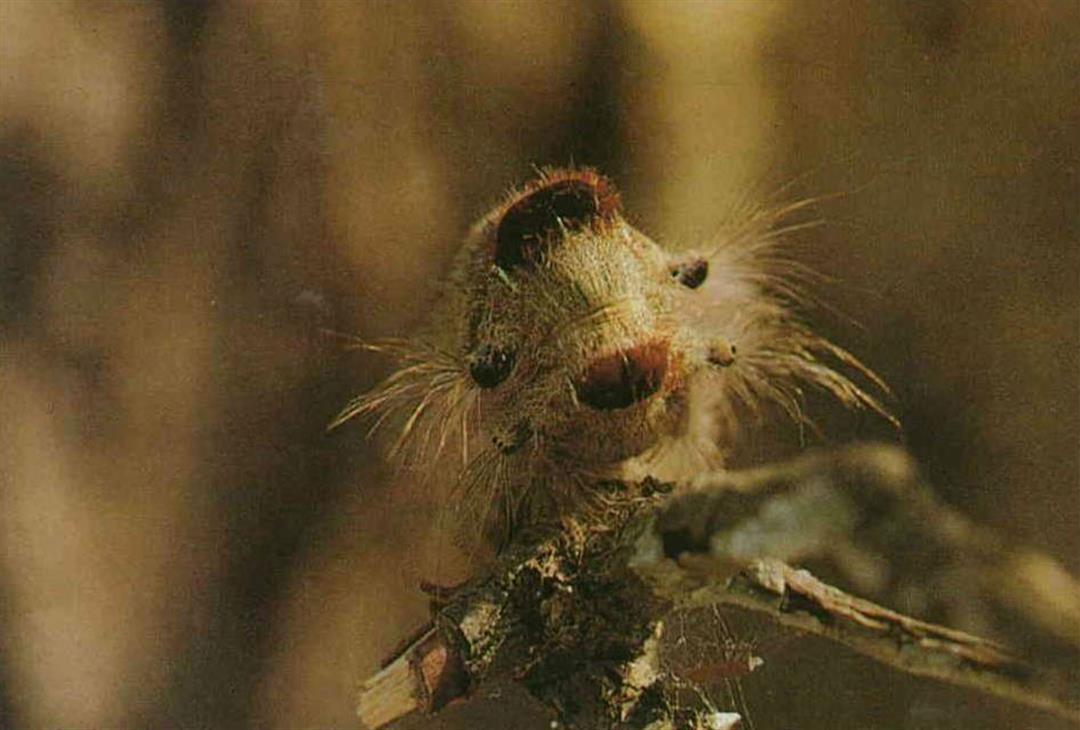
This is a moth chrysalis.
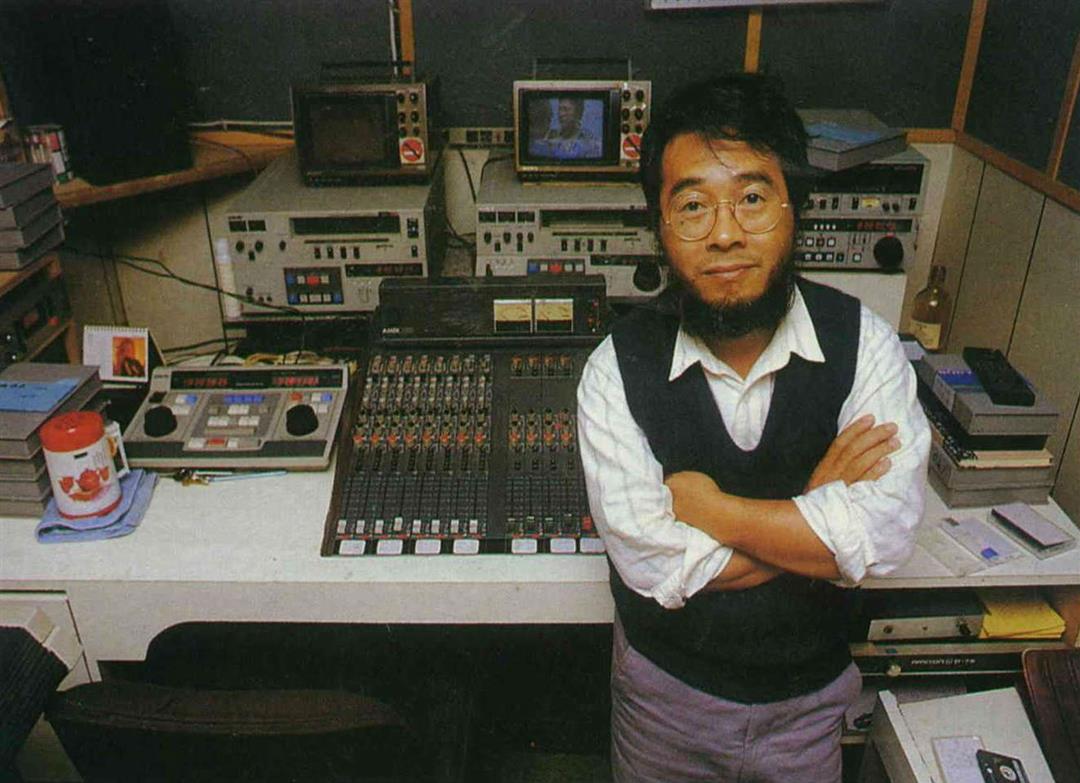
Liu Yen-ming adds some finishing touches to his documentary on the Formosan blue magpie in the sound room.
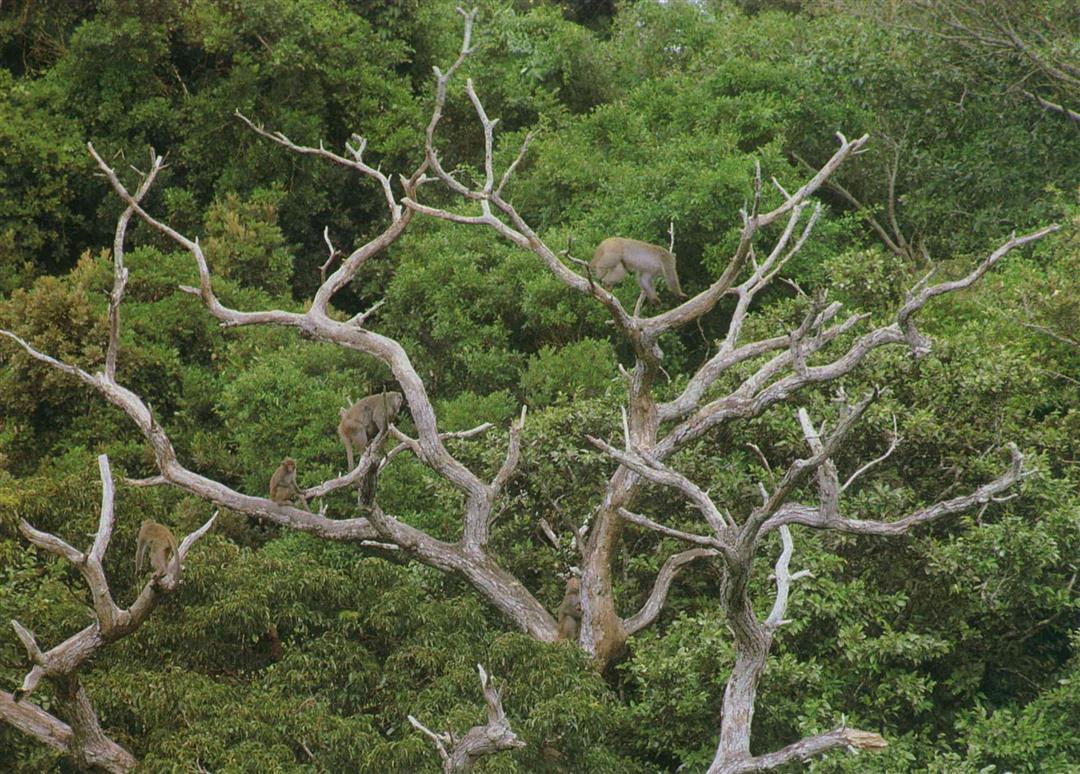
(Right) Monkeys don't act according to script. You have to wait patiently if you want a good shot.